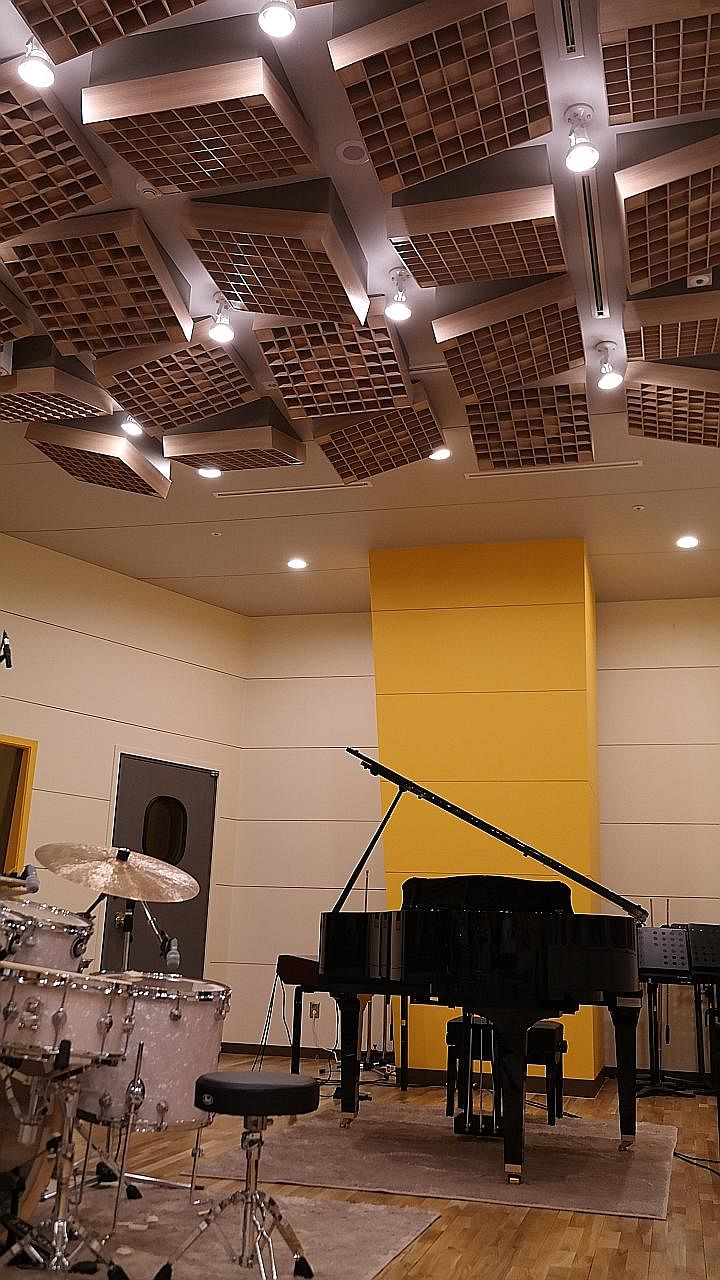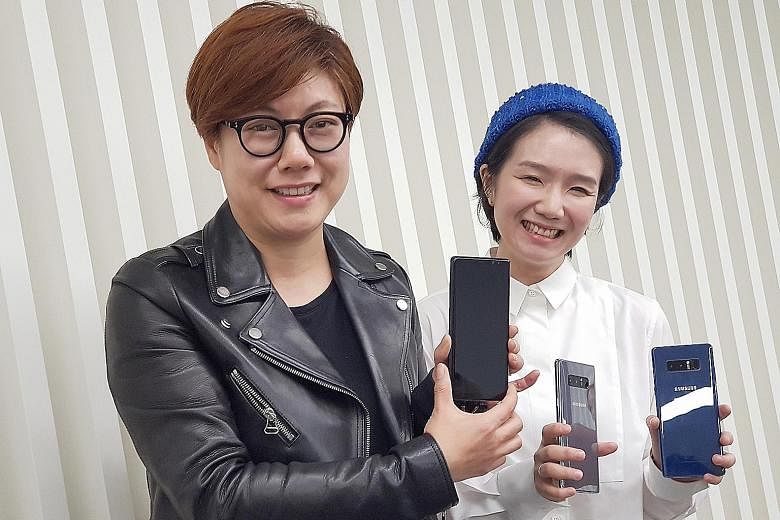Paying fanatical attention to detail and achieving "harmonious" aesthetics have become the key planks of the design ethos for Samsung's smartphones, such as its latest flagship Galaxy Note8.
This is a far cry from the days when Samsung phones were criticised for looking plasticky.
Each side of a Note8, for instance, has been polished 25,000 times at a rate of 500 times per second to reveal its aluminium lustre in full splendour. And picking the right colours to accentuate the polished material started 20 months before the phone's launch, said Ms Lee Sae Hee, the colour, material and finish designer of Samsung's mobile communications business, during a media visit to Samsung's Design Lab last week in Seoul.
"Because of the large screen size in Note8, we tend to select colours with lower saturation so that users feel more comfortable in everyday life (when using the Note8)," she said.
With the Note8, Samsung has strived for a "harmonious" design, said Ms Lee Ji Young, product designer of Samsung's mobile communications business. She pointed to the rear dual-lens camera's position beside the rear fingerprint sensor, and how that part of the phone is consistently finished in black across the different colour models of the Note8, as examples of such a design.
"We are looking for a sense of design unity that ties all the features together," she said.
When asked why the bottom ports of the Note8 smartphone are not in a straight line if harmonious design is what Samsung is striving for, Ms Lee Ji Young conceded that, as a designer, she would have liked it to be so. However, there are other engineering considerations such as the optimal size and placement of the components in the smartphone.

Internal research by Samsung revealed that the most important factor that consumers consider when purchasing smartphones is design.
While it is hard to precisely relate design excellence to business bottom line, "it is clear that differentiated designs play a critical role in expanding the sales of products", said Mr Lee Min Hyouk, Samsung's senior vice-president and head of mobile design team.
Samsung has been criticised in the past for copying competitors' design. But this has not been the case.
"Our philosophy is not to focus on what our competitors are doing, but rather focus on creating great devices and services that enhance our customers' lives and empower them to do incredible things," said Mr Lee.
SOUND LAB
You might take the ringtones and vibrations of your smartphone for granted. But the sound effects and vibrations found in Samsung Galaxy smartphones as well as other devices go through a careful and thorough process of composition in the Sound Lab on the Seoul campus.
Mr Nam Myoung Woo, senior sound designer of Samsung's mobile communications business, said that when designing sound effects, the sound team looks at how humans interpret sound so that users can know what the specific functions used are.
Rearranging a melody's tones and beats allows users to know if the device is starting up or shutting down. In addition, the team also tried to use real-life sound situations to help users get used to the features of Note8.
For example, the sound effect when users swipe up the virtual credit card in the Samsung Pay app mimics the sound made by taking a real credit card out from a wallet, Mr Nam explained.
When using Note8's S Pen stylus to write something, the sound effect uses the real sound of pencil writing on paper. Doing so ensures a better user experience.
It is also important to retain some design unity among the sound effects. Since 2012, Samsung mobile devices have been using the same default ringtone known as "Over the Horizon".
Although "Over the Horizon" has been remixed every year with different instrumentations, its tone remains distinct. And every time you hear this tone, you know it is a Samsung phone.


